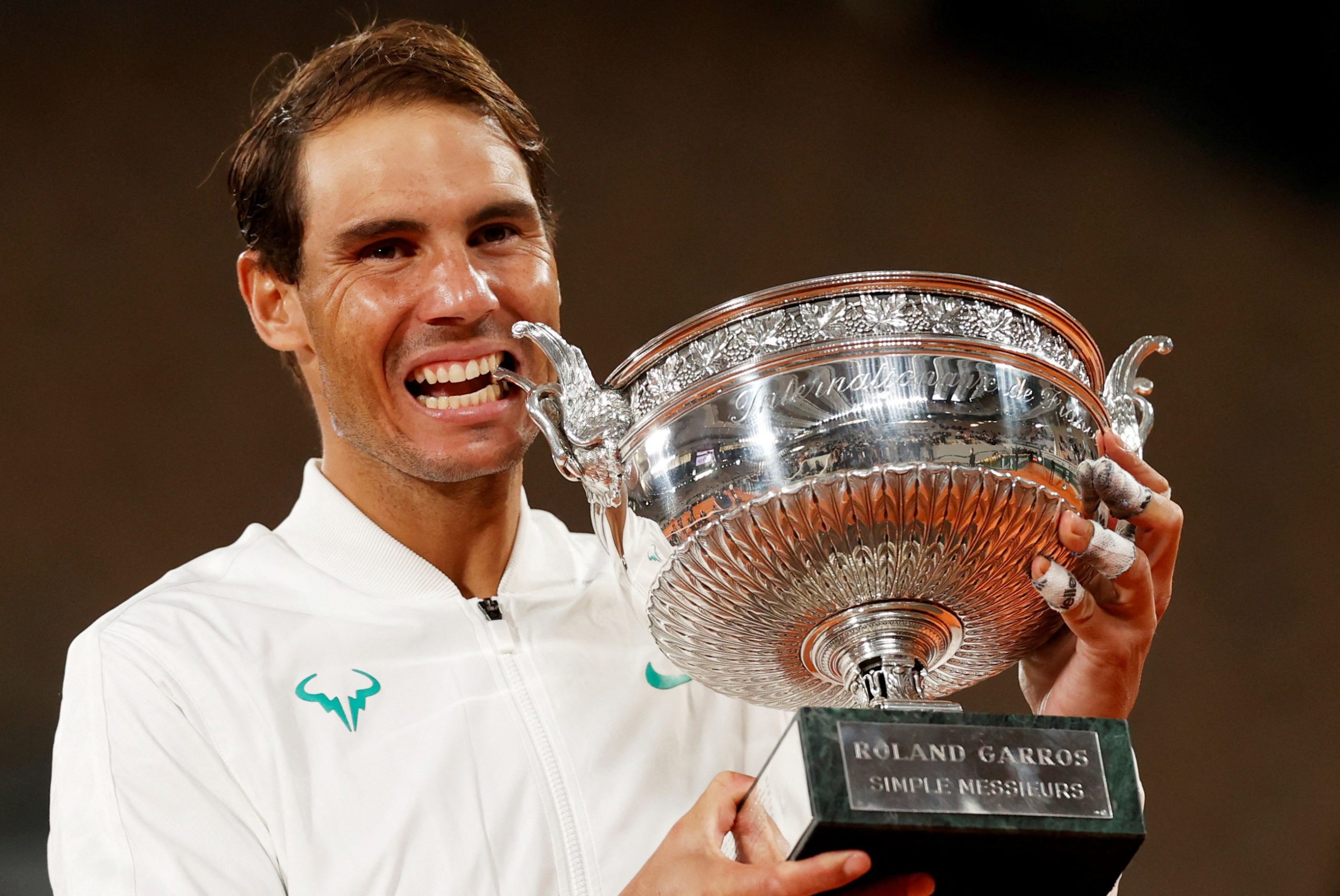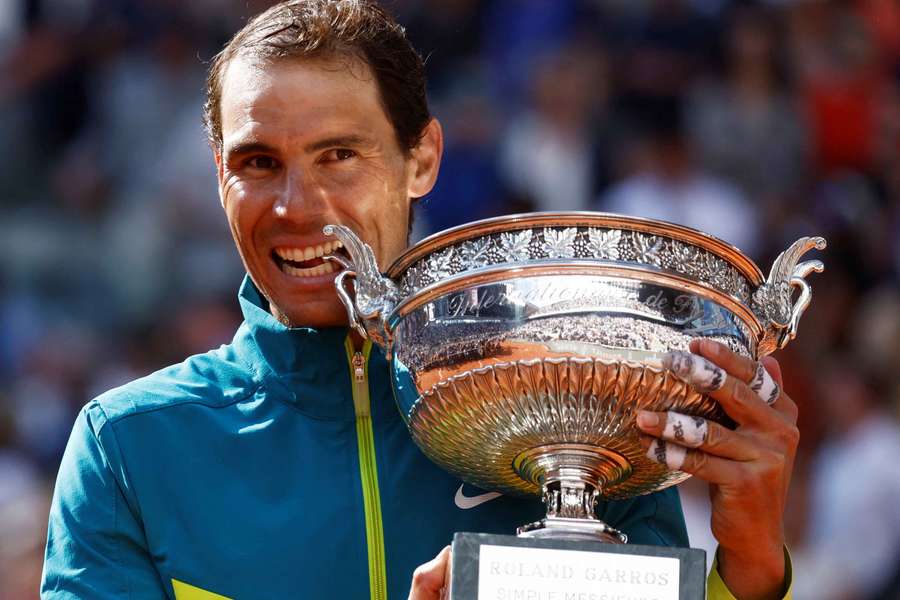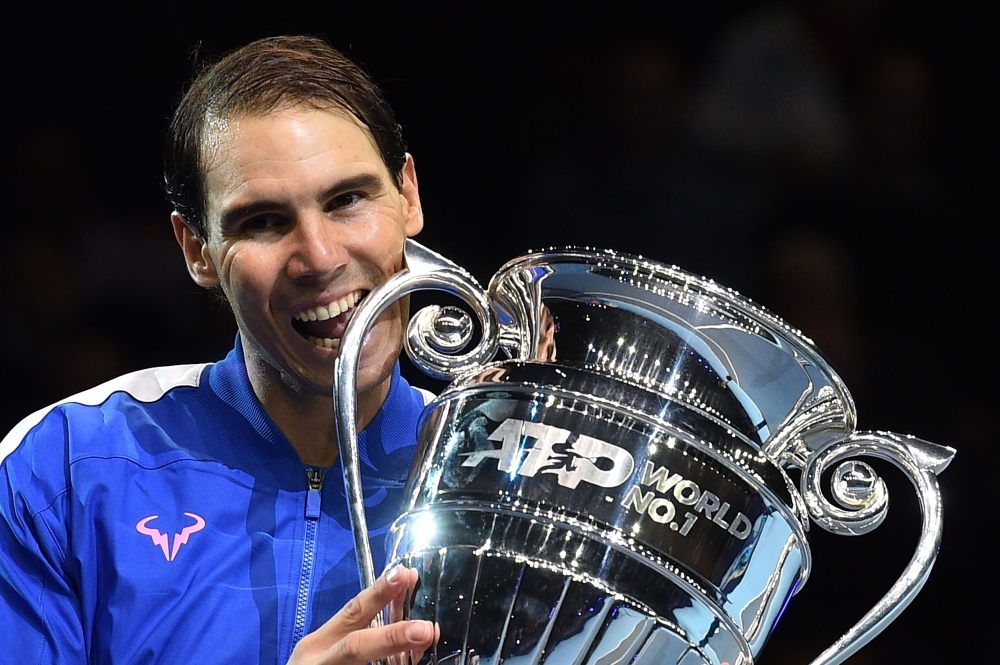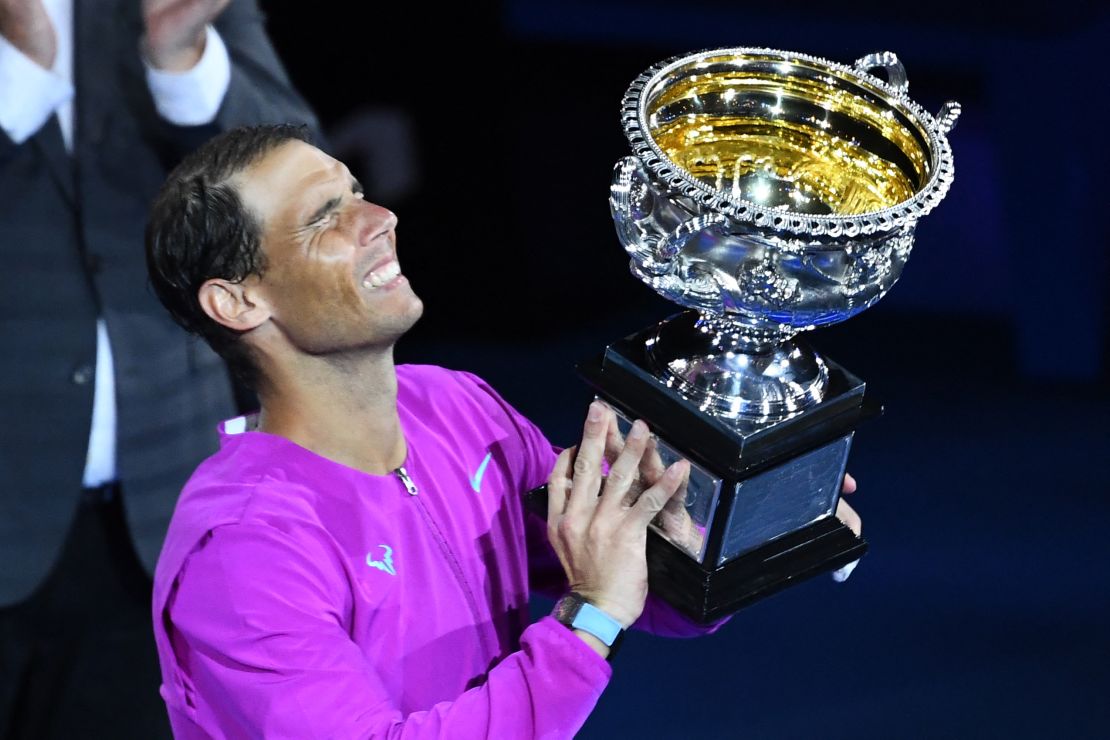BREAKING NEWS:ATP Finals: The Elusive Trophy in Rafael Nadal’s Stellar Career

ATP Finals: The Elusive Trophy in Rafael Nadal’s Stellar Career…..
As the tennis season approaches its end, anticipation builds for the ATP Finals—a prestigious tournament where only the top eight men’s singles players compete. It’s an event steeped in history and allure, known for its high-stakes matches and the grand prize that distinguishes it as a marquee accomplishment in the sport. For most top players, winning the ATP Finals represents the culmination of an outstanding season, but for Rafael Nadal, the Finals remain a glaring omission in an otherwise illustrious career.
With 22 Grand Slam titles, multiple Davis Cup victories, and an Olympic gold medal, Nadal has little left to prove. Yet, despite his remarkable achievements on the biggest stages of tennis, the ATP Finals trophy has eluded him. This is a distinction that continues to intrigue fans and critics alike: How has a player of Nadal’s caliber, whose achievements have defined an era, been unable to claim this one title?
This article delves into the circumstances surrounding Nadal’s ATP Finals pursuit, exploring the complexities of his participation, near-misses, and why this one missing trophy continues to resonate so deeply within the tennis community.

A Career Defined by Grand Slam Dominance
Rafael Nadal’s name has become synonymous with relentless intensity, mental resilience, and an unrivaled legacy at the French Open, where he has claimed an unprecedented 14 titles. Known for his adaptability across surfaces, Nadal has also conquered the Australian Open, Wimbledon, and the US Open multiple times, showcasing his versatility and skill at the sport’s pinnacle. His Grand Slam total of 22 titles has cemented his place among the sport’s all-time greats, rivaling contemporaries like Novak Djokovic and Roger Federer.
But the ATP Finals present a unique challenge. Unlike Grand Slams, where Nadal has the luxury of five-set matches and sufficient recovery days, the ATP Finals operate with a quicker turnaround, a best-of-three-set format, and—perhaps most notably—a consistently hard indoor court. These factors have often worked against Nadal’s physical style of play, favoring players who thrive on fast courts with an aggressive game plan. For years, these specific tournament dynamics have impacted Nadal’s performance at the Finals, making them arguably the biggest gap in his otherwise flawless record.

The Indoor Hard Court Conundrum
One of the significant reasons Nadal has struggled at the ATP Finals is the surface. The tournament has been traditionally held on indoor hard courts, which differ significantly from the clay courts where he has found unrivaled success. Hard courts are generally faster, allowing opponents to take time away from Nadal and shorten points—a stark contrast to the long, grinding rallies Nadal is famous for. Indoors, this effect is amplified as there are no external elements like wind or sun, further speeding up the court conditions.
Historically, the indoor setting has not been favorable to Nadal’s topspin-heavy playing style, which is optimized for slower surfaces. This surface minimizes the effectiveness of his high-bouncing forehand, one of his greatest weapons, and puts additional stress on his knees, which have been a point of vulnerability throughout his career. Unlike outdoor hard courts, which offer some variation in ball bounce and speed, indoor courts present a consistent, fast-paced environment that often benefits players with big serves and flatter, more aggressive strokes.
While Nadal has made adjustments to his game to become competitive on hard courts, the indoor conditions have limited his adaptability, especially against aggressive players like Djokovic, Federer, and Daniil Medvedev. The nature of indoor play is less forgiving of Nadal’s typical strategy of wearing down opponents over extended rallies, often leaving him susceptible to quicker, more decisive plays.

Near-Misses and Moments of Brilliance
Nadal’s quest for the ATP Finals trophy has been marked by several close encounters and remarkable runs, yet each attempt has ended with disappointment. Since his debut at the Finals in 2006, he has reached the final twice, first in 2010 and again in 2013. His run to the final in 2010 showcased his adaptability and resilience, particularly when he battled through a series of three-set matches, including a semifinal victory over Andy Murray. In the final, however, he faced Federer, who capitalized on the indoor conditions to outplay Nadal in a decisive two-set match, claiming the title 6-3, 3-6, 6-1.
In 2013, Nadal returned to the final with another strong showing, dispatching the likes of Stan Wawrinka and Tomas Berdych before clashing with Djokovic. The Serbian was in his prime, and his baseline aggression and consistency proved too much for Nadal, who struggled to penetrate Djokovic’s defenses. The match ended with a 6-3, 6-4 victory for Djokovic, leaving Nadal once again without the ATP Finals crown.
Each year since, the Finals have presented new challenges and circumstances. In recent years, injuries have often impeded Nadal’s progress. His rigorous playing style, which is both his strength and his weakness, has led to recurring injuries, particularly in his knees and wrists. These physical setbacks have forced him to either withdraw from the tournament entirely or enter at less-than-optimal fitness, further complicating his chances.
The Unique Prestige of the ATP Finals
Unlike the Grand Slams, where victory is often attributed to peak performance on the day, the ATP Finals test a player’s consistency across an entire week against the top-ranked opponents. The round-robin format requires resilience and adaptability; a single loss doesn’t mean elimination but can add immense pressure to subsequent matches. This format makes it a distinctive challenge compared to traditional knockout-style tournaments and has proven to be a difficult arena for Nadal, who excels in Grand Slam conditions.
Adding to the allure is the Finals’ position as the season’s concluding event, often billed as the ultimate test of a player’s endurance and skill. Many of Nadal’s peers, including Federer, Djokovic, and even Andy Murray, have lifted the ATP Finals trophy, adding it to their list of accomplishments. For Nadal, who takes pride in his ability to compete at the highest level against his closest rivals, the absence of this title remains an uncharacteristic blank spot.
An Ongoing Legacy Despite the Missing Trophy
Although Nadal’s ATP Finals pursuit remains incomplete, his legacy is in no way diminished by it. For his fans and many in the tennis world, Nadal’s consistent pursuit of excellence, his sportsmanship, and his sheer love for the game have set him apart. Even without the ATP Finals title, Nadal’s contributions to the sport, his indomitable spirit, and his historic achievements in the Grand Slams are hallmarks of a champion whose legacy transcends statistics.
As Nadal nears the twilight of his career, questions about his future linger, especially after a 2023 season marked by injuries and speculation over retirement. His statements suggest he may return for one final competitive season, and fans are hopeful that this might be the year he can compete at the ATP Finals with full fitness. The elusive trophy has added a layer of mystique to Nadal’s career, but it has also become a testament to his perseverance.

What Winning the ATP Finals Would Mean
Winning the ATP Finals, should he accomplish it, would undoubtedly be one of the most celebrated victories of Nadal’s career. Not only would it be a testament to his adaptability and resilience, but it would also complete his trophy cabinet, adding the final piece to a legacy that is already one of the most storied in tennis history. The ATP Finals represent the epitome of achievement for any player who has spent years at the sport’s highest level, and for Nadal, capturing this title would be a fitting conclusion to his remarkable journey.
A victory would silence the doubts and counter the criticisms that have lingered over his indoor court performances. It would cement his place as one of the most versatile champions the sport has ever seen, proving once again that his dedication and competitive spirit can transcend any obstacle.
The Final Push and Nadal’s Enduring Motivation
Rafael Nadal has spent nearly two decades challenging the status quo, pushing the limits of what a tennis player can achieve. He has inspired generations with his relentless pursuit of excellence, his respect for opponents, and his resilience in the face of adversity. The ATP Finals may be the one title he has yet to claim, but his career has been a triumph in every other sense.
Whether he ultimately wins the Finals or not, Nadal’s enduring appeal lies in his love for the sport, his unbreakable will, and his status as a symbol of perseverance. The trophy may be elusive, but Nadal’s impact on tennis is anything but. As he approaches what may be his final seasons, the ATP Finals will remain a goal worth pursuing, a prize that represents more than just another title—it’s a chance to affirm, one last time, the incredible story of Rafael Nadal.





